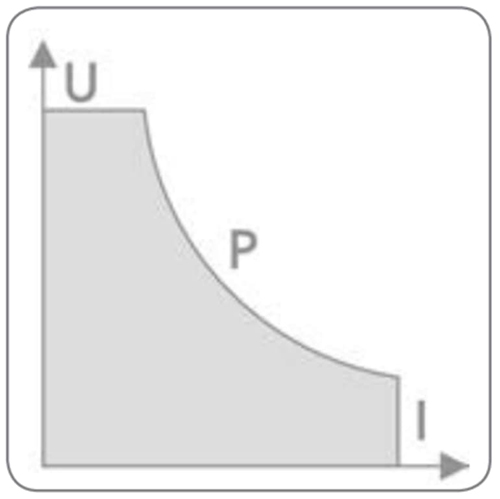
- Description
- Attributes
- Documents
EA Elektro-Automatik EA-PS 9750-06 1U DC Laboratory Power Supply
Power: 1500 W
Voltage: 750 V
Current: 6 A
Control panel with pushbuttons and blue LCD for actual values, set values, status and alarms
Flexible, power-regulated output stage
Very low height of only 1U
LabView Vls and control software for Windows
High efficiency: up to 95%
Various protection circuits (OVP, OCP, OPP, OTP)
Remote sensing
The Elektro EA-PS 9080-100 1U Programmable Laboratory DC Power Supply provides an output power rating of 0..3000 W with an output voltage of 0...80 V and an output current of 0...100A. It offers a wide AC supply voltage range: 100...264 V, with active PFC.
Making the use of this equipment remarkably easy and most effective. All this comes in a flat design with only 44 mm (1.75") of height. The clearly arranged control panel features two rotary knobs, six pushbuttons, and two LEDs. Together with an illuminated, blue LCD display for all values and status, it simplifies the use of the device.
AC supply
The unit is provided with an active Power Factor Correction circuit. It can reduce the output power automatically when the input supply is low, so it can still provide 2.5 kW at 180...207 VAC.
DC output
Current, voltage and power can thus be adjusted continuously between 0% and 100%, no matter if manually or remotely controlled (analog or digital). The DC output is located on the rear panel of the devices.
Power
The unit is equipped with a flexible autoranging output stage which provides a higher output voltage at a lower output current, or a higher output current at a lower output voltage, always limited to the adjustable power set value or the rated power. Therefore, a wide range of applications can already be covered by the use of just one unit.
Discharge circuit
The unit includes a discharge circuit for the output capacities. For no load or low load situations, it ensures that the dangerous output voltage can sink to under 60 V DC after the DC output has been switched off. This value is considered as the limit for voltages dangerous to human safety.
Protective features
For the protection of the equipment connected, it is possible to set an overvoltage protection threshold (OVP), as well as one for overcurrent (OCP) and overpower (OPP).
As soon as one of these thresholds is reached for any reason, the DC output will be immediately shut off and a status signal will be generated on the display and via the interfaces. There is furthermore overtemperature protection, which will shut off the DC output if the device overheats.


Display and controls
All important information is clearly visualized on a dot matrix display. With this, information about the actual output values and set values of voltage and current, the actual control state (CV, CC, CP), and other statutes, as well as alarms and settings of the setup menu are clearly displayed.
In order to ease the adjusting of values by the rotary knobs, pushing them can switch between decimal positions of a value. All these features contribute to an operator friendliness. With a panel lock feature, the whole panel can be locked in order to protect the equipment and the loads from unintentional misuse.
Analog interface
A galvanically isolated analog interface terminal is located on the rear of the device. It offers analog inputs to set voltage, current, and power from 0...100% through control voltages of 0 V...10 V or 0 V...5 V. To monitor the output voltage and current, there are analog outputs with voltage ranges of 0 V...10 V or 0 V...5 V. Also, several inputs and outputs are available for controlling and monitoring the device status.
Digital interfaces
The unit features two galvanically isolated, digital interfaces by default. These are 1x USB and 1x Ethernet. Both can be used to control and monitor the devices with SCPI language commands or ModBus RTU protocol. Remote control of a device can be done either by the included software EA Power Control (see page 118)or by a custom application, which is supported by programming documentation, as well as LabView Virtual Instruments (VIs).

